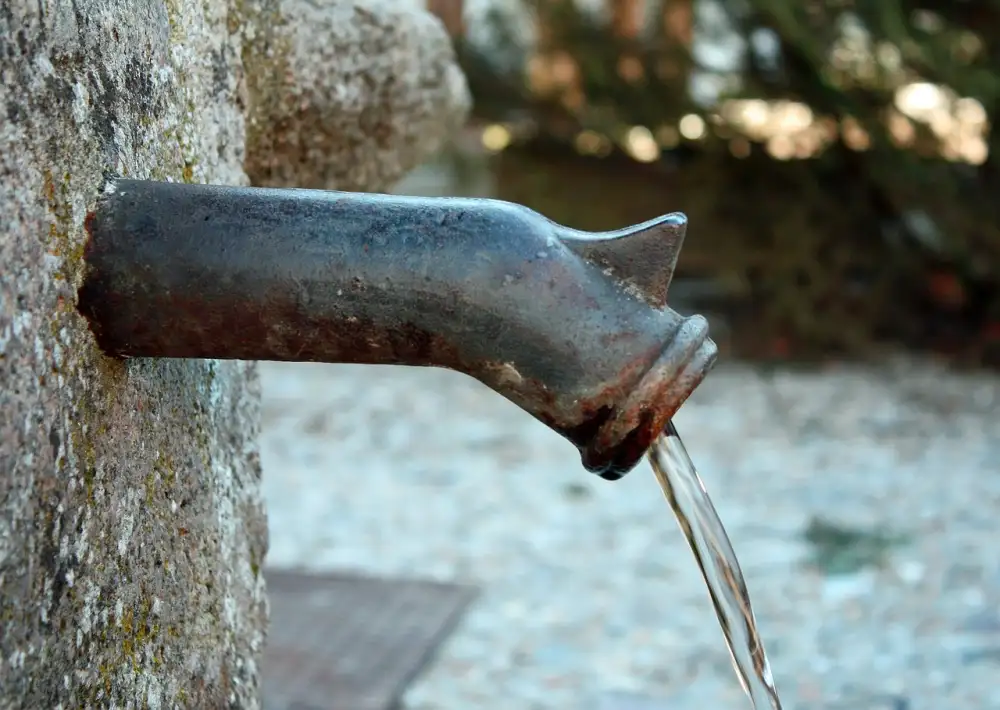Mastering the Art of Cleaning a Cast Iron Pan: Essential Tips and Tricks for a Spotless Kitchen

A cast iron pan is a versatile and durable kitchen tool that can last for generations if properly cared for. However, cleaning a cast iron pan can be a daunting task if you don't know the right techniques. In this article, we will guide you through the essential tips and tricks to master the art of cleaning a cast iron pan, ensuring it remains spotless and ready for your next flavorful culinary adventure. With these simple steps, you'll be able to maintain the integrity of your cast iron pan while keeping your kitchen pristine and organized. So let's dive in and discover the secrets to achieving a spotless kitchen with a clean cast iron pan!
Gather necessary supplies
To clean a cast iron pan effectively, it is important to gather the necessary supplies beforehand. Here's what you'll need:
1. Hot water: Make sure you have access to hot water for cleaning the pan. Hot water helps to loosen any stuck-on food particles and makes the cleaning process easier.
2. Sponge or brush: Use a soft sponge or brush specifically designated for cleaning cast iron pans. Avoid using abrasive materials that can damage the seasoning of the pan.
3. Salt (optional): If there are stubborn food residues on the pan, you can sprinkle some salt onto the surface before scrubbing. The salt acts as a gentle abrasive and helps to remove the residue without scratching the pan.
4. Paper towels or cloth: Keep some paper towels or a clean cloth nearby for drying the pan after washing.
By gathering these essential supplies, you'll be well-prepared to tackle the task of cleaning your cast iron pan effectively and efficiently.
Remove any food residue
To remove any food residue from your cast iron pan, start by using a stiff brush or scraper to loosen any stuck-on bits. Be gentle to avoid scratching the surface of the pan. Next, rinse the pan with hot water to help loosen any remaining residue. If necessary, you can use a small amount of salt as an abrasive to help remove stubborn food particles. Scrub the pan with a sponge or cloth, focusing on areas with residue. Rinse thoroughly and inspect for any remaining food debris before moving on to the next step in cleaning your cast iron pan.
Use hot water and a sponge to clean the pan
To clean a cast iron pan, start by using hot water and a sponge. The heat helps to loosen any stuck-on food particles, making them easier to remove. Avoid using soap or harsh cleaning agents as they can strip away the pan's seasoning. Instead, rely on the power of hot water and gentle scrubbing with a sponge to get rid of any residue. Make sure to thoroughly rinse the pan to remove all traces of food. This method ensures that your cast iron pan stays seasoned and ready for future cooking adventures.
Avoid using soap or harsh cleaning agents
When it comes to cleaning a cast iron pan, it's important to avoid using soap or harsh cleaning agents. The reason behind this is that soap can strip away the seasoning of the pan, which is the natural non-stick coating that develops over time. Harsh cleaning agents can also damage the surface of the pan and affect its performance. Instead, opt for using hot water and a sponge to clean off any food residue. The heat helps to loosen any stuck-on bits, while the sponge provides gentle scrubbing action without causing any harm to the pan. By avoiding soap and harsh cleaning agents, you can ensure that your cast iron pan remains in top-notch condition for years to come.
Dry the pan thoroughly
After cleaning your cast iron pan, it is crucial to dry it thoroughly to prevent rusting. Leaving any moisture on the surface can lead to corrosion and damage the pan over time. Start by using a clean, dry cloth or paper towel to remove any excess water. Then, place the pan on a stovetop burner set to low heat for a few minutes. This will help evaporate any remaining moisture. Alternatively, you can also put the pan in an oven set at a low temperature for about 10-15 minutes. Make sure it is completely dry before proceeding to the next step of applying oil. Remember, proper drying is essential for maintaining the longevity and performance of your cast iron pan.
Apply a thin layer of oil to prevent rusting
Applying a thin layer of oil to your cast iron pan is essential for preventing rusting. After thoroughly drying the pan, use a paper towel to apply a small amount of vegetable oil or melted shortening to the entire surface, including the handle. Make sure to coat both the interior and exterior of the pan evenly. The oil acts as a protective barrier, preventing moisture from coming into direct contact with the iron and causing rust. It also helps maintain the seasoning on the pan, enhancing its non-stick properties. Remember to wipe off any excess oil before storing the pan to avoid it becoming sticky or attracting dust. By regularly applying oil, you can keep your cast iron pan in excellent condition for years to come.
Store the pan in a dry place
To ensure the longevity of your cast iron pan, it is crucial to store it in a dry place. Moisture is the enemy of cast iron as it can lead to rusting. After cleaning and drying your pan thoroughly, find a spot in your kitchen that is free from any moisture or humidity. Avoid storing it near the sink or any other water source. Instead, opt for a cabinet or shelf where the pan can be protected from any potential exposure to moisture. By storing your cast iron pan in a dry place, you are taking an essential step towards maintaining its quality and preventing rust formation.
Additional tips for maintaining a cast iron pan
1. Avoid using metal utensils: Metal utensils can scratch the surface of your cast iron pan. Opt for wooden or silicone utensils instead to preserve its smoothness.
2. Season regularly: To maintain the non-stick surface of your cast iron pan, it's important to season it regularly. Simply apply a thin layer of oil and heat the pan on low heat for about 10 minutes. This will help to keep the pan well-seasoned and prevent food from sticking.
3. Avoid soaking for long periods: While it's important to clean your cast iron pan promptly after use, avoid soaking it in water for extended periods. Prolonged exposure to water can cause rusting.
4. Use gentle cleaning methods: If you encounter stubborn food residue, try using a stiff brush or salt scrub to gently remove it. Avoid abrasive sponges or steel wool as they can damage the seasoning.
5. Re-season when necessary: Over time, the seasoning on your cast iron pan may wear off. If you notice food starting to stick more frequently, it's time to re-season your pan by applying a fresh layer of oil and heating it again.
By following these additional tips, you can ensure that your cast iron pan remains in excellent condition and continues to provide you with delicious meals for years to come.
In conclusion, mastering the art of cleaning a cast iron pan is essential for maintaining its longevity and ensuring a spotless kitchen. By following these tips and tricks, you can easily keep your cast iron pan in pristine condition. Remember to gather the necessary supplies, remove any food residue, clean with hot water and a sponge, avoid using soap or harsh cleaning agents, dry the pan thoroughly, apply a thin layer of oil to prevent rusting, and store it in a dry place. Additionally, regular maintenance such as seasoning and avoiding acidic foods will further enhance the performance of your cast iron pan. With proper care, your cast iron pan will continue to deliver flavorful cooking experiences for years to come.
Published: 27. 02. 2024
Category: Home



